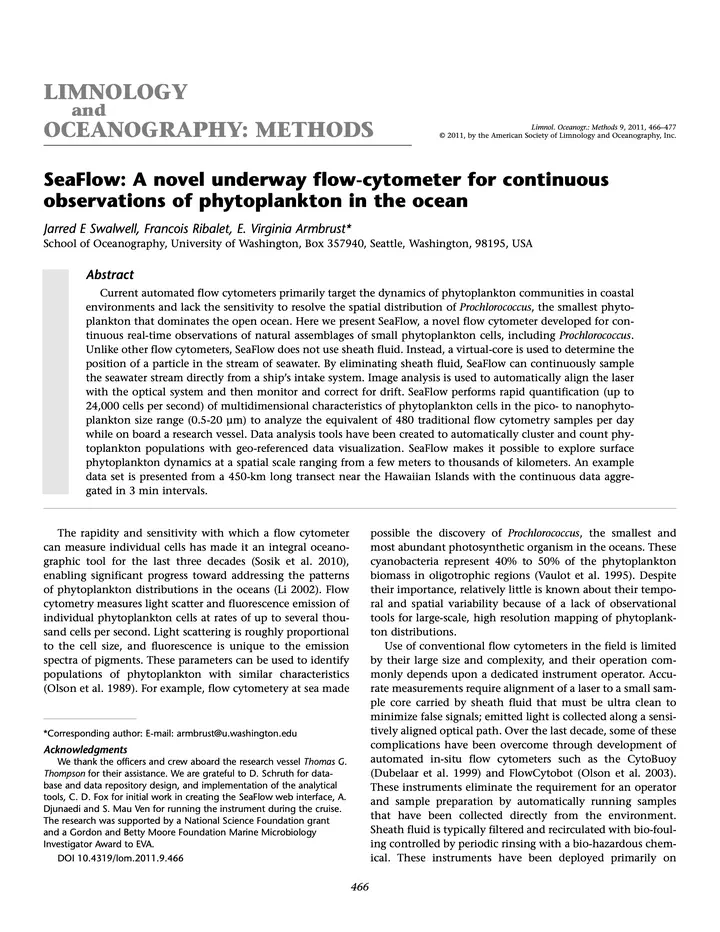Seaflow: A novel underway flow-cytometer for continuous observations of phytoplankton in the ocean

Abstract
Current automated flow cytometers primarily target the dynamics of phytoplankton communities in coastal environments and lack the sensitivity to resolve the spatial distribution of Prochlorococcus, the smallest phytoplankton that dominates the open ocean. Here we present SeaFlow, a novel flow cytometer developed for continuous real-time observations of natural assemblages of small phytoplankton cells, including Prochlorococcus. Unlike other flow cytometers, SeaFlow does not use sheath fluid. Instead, a virtual-core is used to determine the position of a particle in the stream of seawater. By eliminating sheath fluid, SeaFlow can continuously sample the seawater stream directly from a ship’s intake system. Image analysis is used to automatically align the laser with the optical system and then monitor and correct for drift. SeaFlow performs rapid quantification (up to 24,000 cells per second) of multidimensional characteristics of phytoplankton cells in the pico- to nanophytoplankton size range (0.5-20 μm) to analyze the equivalent of 480 traditional flow cytometry samples per day while on board a research vessel. Data analysis tools have been created to automatically cluster and count phytoplankton populations with geo-referenced data visualization. SeaFlow makes it possible to explore surface phytoplankton dynamics at a spatial scale ranging from a few meters to thousands of kilometers. An example data set is presented from a 450-km long transect near the Hawaiian Islands with the continuous data aggregated in 3 min intervals.